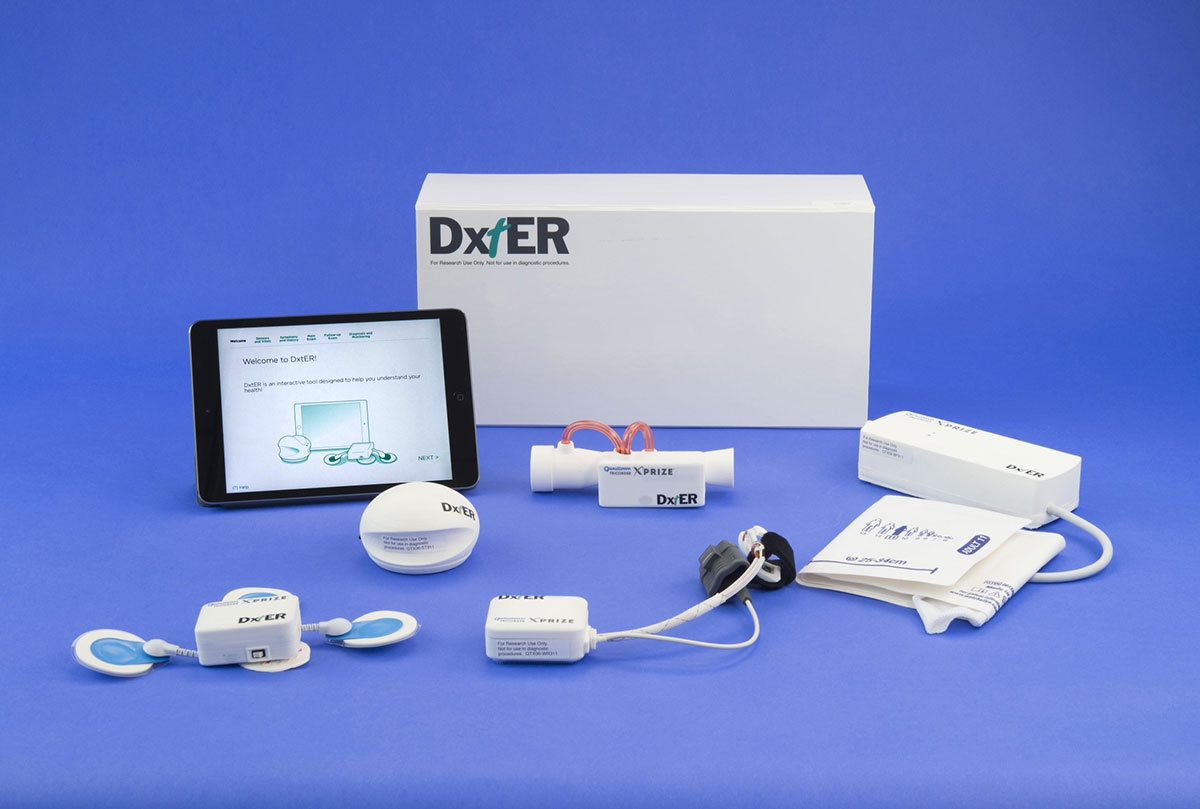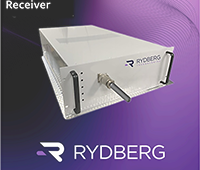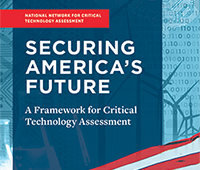
The DxtER Credit: Final Frontier Medical Devices
Patients could someday test and diagnose their illnesses from the comfort of their own homes, with a tricorder device, modeled in part, by the multifunction hand-held device used in Star Trek.
The DxtER—developed by Final Frontier Medical Devices as part of Basil Leaf Technologies—weights less than five pounds and can enable consumers to monitor five real-time health vital signs and diagnose 34 diseases without a clinician, using artificial intelligence (A.I.) The A.I. learns from clinical emergency medicine with data analysis from actual patients.
The device will be announced as the winner of the Qualcomm Tricorder Xprize competition on July 31 during the 69th AACC Annual Scientific Meeting & Clinician Lab Expo in San Diego.
It can test for a range of routine illnesses, including urinary tract infections, as well as chronic illnesses like diabetes. The device also could test for acute conditions that require critical care like pneumonia.
There is an average wait of 21 days to get a doctor’s appointment in the U.S., which could lead to delays in care or expensive emergency room visits.
By being able to test for illnesses at home, the tricorder could lower healthcare costs while making it more accessible, especially in low-income countries.
The device includes a non-invasive monitor that is designed to measure blood sugar and white blood cell counts without drawing a blood sample. The sensors are designed to collect data about vital signs, body chemistry and biological functions and synthesize the information in the device’s diagnostic engine to make a quick and accurate assessment.
“DxtER is the first consumer-friendly mobile health device to combine vital sign monitoring with an extensive diagnostic testing menu and it could lead to a huge leap forward in patient care,” AACC CEO Janet Kreizman, said in a statement. “We are thrilled that Final Frontier Medical Devices is presenting this technology at the AACC Annual Scientific Meeting, where leaders in laboratory medicine can evaluate it and contribute their insights to the rapidly advancing world of at-home testing.”
Final Frontier Medical Devices is a Pennsylvania-based company led by brothers Dr. Basil Harris, an emergency medicine physician and George Harris, a network engineer.
During the annual meeting Final Frontier Medical Devices team member Philip Charron is expected to present the science behind the groundbreaking device and will allow attendees to ask questions about the product.
The team took home the first prize at the annual conference that comes with a $2.6 million prize.




